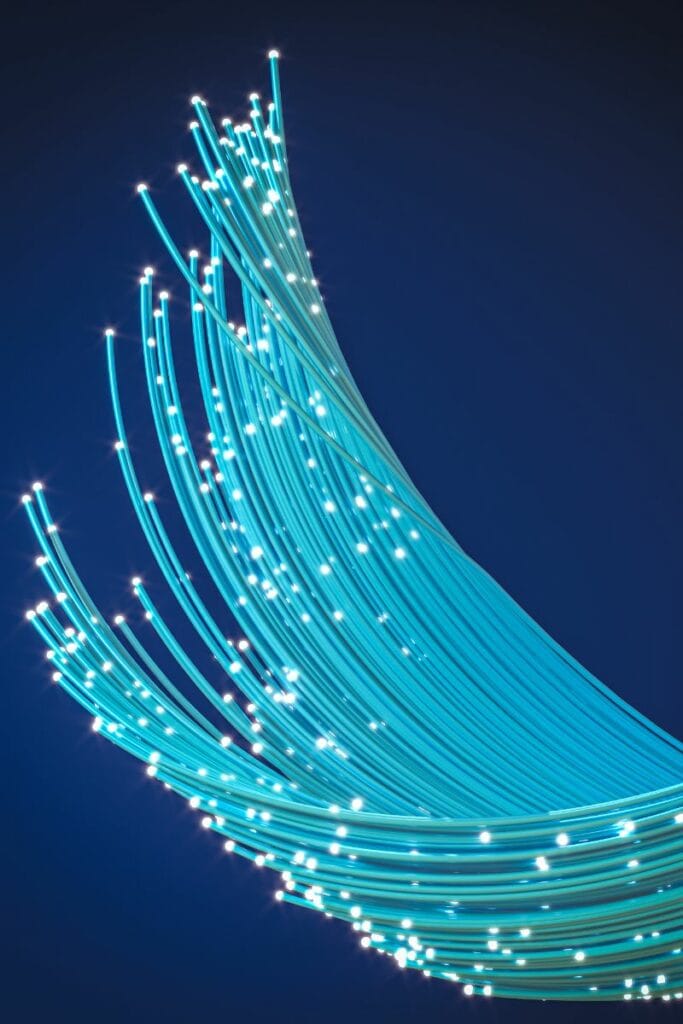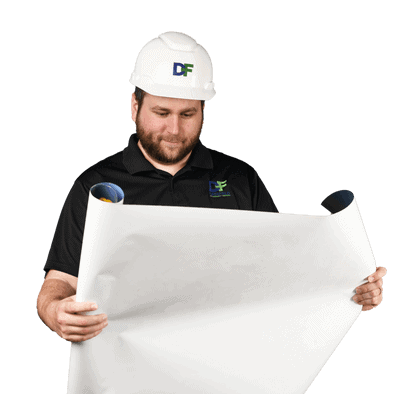When deploying a fiber optic network, one of the most critical decisions is whether to install fiber cables aerially (on utility poles) or underground (buried beneath the surface). Each method has distinct advantages, challenges, and cost implications, making it essential for telecom providers, city planners, and infrastructure engineers to evaluate their options carefully.
Factors such as installation speed, maintenance costs, environmental impact, and long-term reliability all play a role in determining the best approach. Here at DataField, we explore the differences between aerial and underground fiber installation, helping decision-makers select the most efficient and cost-effective solution for their network needs.
Selecting the right fiber optic installation method is a crucial step in building a reliable and cost-effective network. Whether deploying fiber for high-speed internet, telecommunications, or enterprise infrastructure, the choice between aerial and underground installation directly impacts project timelines, maintenance costs, and long-term network performance.
The decision between aerial and underground fiber deployment is influenced by several factors, including:
By carefully evaluating these factors, network engineers and decision-makers can choose the most suitable installation method that balances cost, durability, and scalability for their fiber optic network.

Aerial fiber installation involves mounting fiber optic cables on existing utility poles or newly installed poles. The fiber cables are strung along these poles using specialized hardware, ensuring proper tension and stability. This method leverages existing infrastructure, making deployment faster and more cost-effective than underground alternatives.
The process typically includes:
✅ Faster Deployment – Since cables are strung on poles rather than buried, aerial fiber can be installed quickly, often in a matter of weeks.
✅ Lower Cost – Requires less labor, excavation, and material compared to underground installation.
✅ Easier Maintenance & Upgrades – Technicians can access cables without extensive digging, making repairs and expansions more efficient.
❌ Susceptible to Weather Conditions – High winds, storms, ice accumulation, and lightning can damage exposed fiber cables.
❌ Vulnerability to Physical Damage – Cables are at risk from falling trees, vehicle collisions, and wildlife interference.
❌ Regulatory & Aesthetic Concerns – Some municipalities impose restrictions on new aerial installations due to visual impact or space limitations on utility poles.
Aerial fiber installation is an excellent choice for regions where existing utility poles are available, budget constraints exist, or rapid deployment is necessary. However, its exposure to environmental hazards makes long-term maintenance an important consideration.
Underground fiber installation involves burying fiber optic cables beneath the ground to protect them from environmental and physical damage. This method requires trenching, boring, or using existing underground conduits to route the fiber network. The installation process typically includes:
✅ More Secure & Reliable – Cables are protected from extreme weather conditions, falling debris, and accidental damage from vehicles or wildlife.
✅ Longevity & Durability – Fiber laid underground is less prone to wear and tear, reducing maintenance costs over time.
✅ Better Aesthetics & Compliance – Eliminates the visual clutter of overhead lines, often meeting regulatory and urban planning requirements.
❌ Higher Installation Costs – Requires heavy machinery, trenching, and specialized labor, increasing initial expenses.
❌ Permitting & Regulatory Challenges – More permits and coordination with municipalities are required, which can delay projects.
❌ Difficult Repairs & Upgrades – Accessing buried cables requires excavation, making maintenance and future expansions more complex and time-consuming.
Underground fiber installation is ideal for urban environments, high-traffic areas, and regions prone to extreme weather. While the upfront costs and permitting process can be challenging, the long-term reliability and security of underground fiber make it a worthwhile investment for many network operators.
When deciding between aerial and underground fiber installation, cost plays a significant role. Both methods involve expenses related to labor, materials, and long-term maintenance, but their financial impact varies based on project scope, location, and environmental conditions.
| Cost Factor | Aerial Fiber Installation | Underground Fiber Installation |
| Labor | Lower – Faster deployment and minimal excavation | Higher – Requires digging, boring, and additional workforce |
| Materials | Lower – Uses existing poles and basic mounting hardware | Higher – Requires conduit, vaults, and trenching materials |
| Permitting | Moderate – Utility pole access may require lease fees | High – Extensive permits needed for excavation |
| Total Upfront Cost | Lower – More budget-friendly for initial deployment | Higher – Significant capital investment required |
Selecting between aerial and underground fiber installation requires careful evaluation of multiple factors. The right choice depends on terrain, climate, budget, existing infrastructure, and long-term network goals. Below are key considerations to guide decision-makers in choosing the most effective fiber deployment method.
Factor | Aerial Fiber | Underground Fiber |
Best For | Rural/Suburban Areas, Quick Deployment, Lower Budget | Urban Areas, Extreme Weather Conditions, Long-Term Reliability |
Cost | Lower Initial Cost, Ongoing Pole Lease Fees | Higher Upfront Cost, Lower Long-Term Maintenance |
Durability | Prone to Weather & Environmental Damage | Highly Durable & Protected |
Maintenance | Easier to Access & Repair | More Expensive & Time-Consuming to Repair |
Making the Right Choice
When planning fiber deployment, decision-makers should assess:
✅ Terrain & infrastructure availability – Are utility poles accessible, or is trenching required?
✅ Weather conditions – Is the location prone to storms, high winds, or flooding?
✅ Budget & long-term goals – Is the project focused on short-term savings or long-term network reliability?
✅ Permitting & regulatory requirements – Are local laws favorable for aerial or underground installation?
Choosing the right fiber deployment method can be complex. DataField Technology Services specializes in fiber optic network design, deployment, and maintenance, helping businesses and municipalities select the best installation strategy for their needs.
